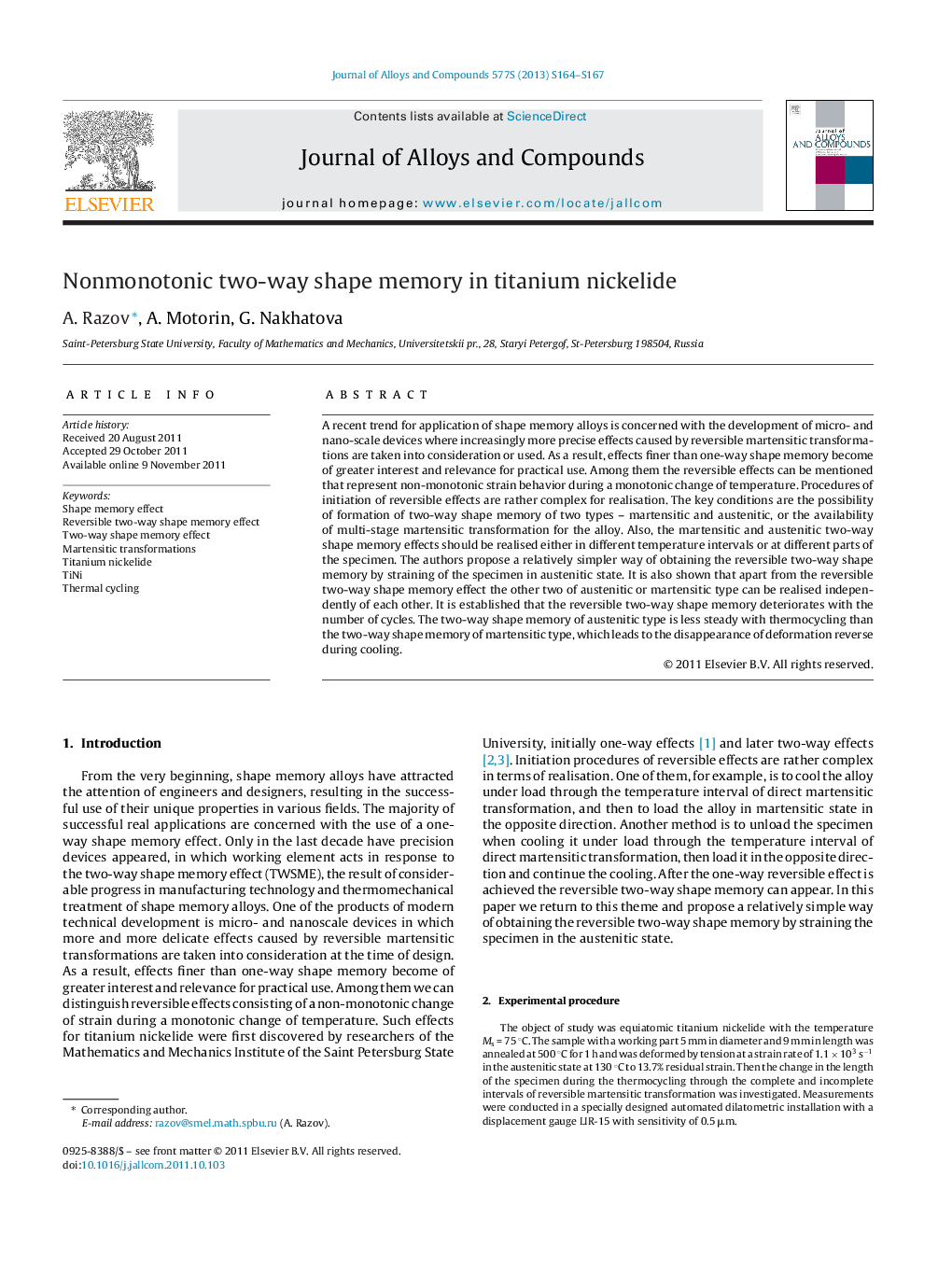| Article ID | Journal | Published Year | Pages | File Type |
|---|---|---|---|---|
| 1613781 | Journal of Alloys and Compounds | 2013 | 4 Pages |
A recent trend for application of shape memory alloys is concerned with the development of micro- and nano-scale devices where increasingly more precise effects caused by reversible martensitic transformations are taken into consideration or used. As a result, effects finer than one-way shape memory become of greater interest and relevance for practical use. Among them the reversible effects can be mentioned that represent non-monotonic strain behavior during a monotonic change of temperature. Procedures of initiation of reversible effects are rather complex for realisation. The key conditions are the possibility of formation of two-way shape memory of two types – martensitic and austenitic, or the availability of multi-stage martensitic transformation for the alloy. Also, the martensitic and austenitic two-way shape memory effects should be realised either in different temperature intervals or at different parts of the specimen. The authors propose a relatively simpler way of obtaining the reversible two-way shape memory by straining of the specimen in austenitic state. It is also shown that apart from the reversible two-way shape memory effect the other two of austenitic or martensitic type can be realised independently of each other. It is established that the reversible two-way shape memory deteriorates with the number of cycles. The two-way shape memory of austenitic type is less steady with thermocycling than the two-way shape memory of martensitic type, which leads to the disappearance of deformation reverse during cooling.
► A simple way of obtaining the reversible two-way shape memory has been found. ► Reversible two-way memory is a blend of austenitic and martensitic two-way memory. ► Reversible two-way shape memory deteriorates with the number of cycles. ► Austenitic two-way shape memory is less steady than martensitic one.
